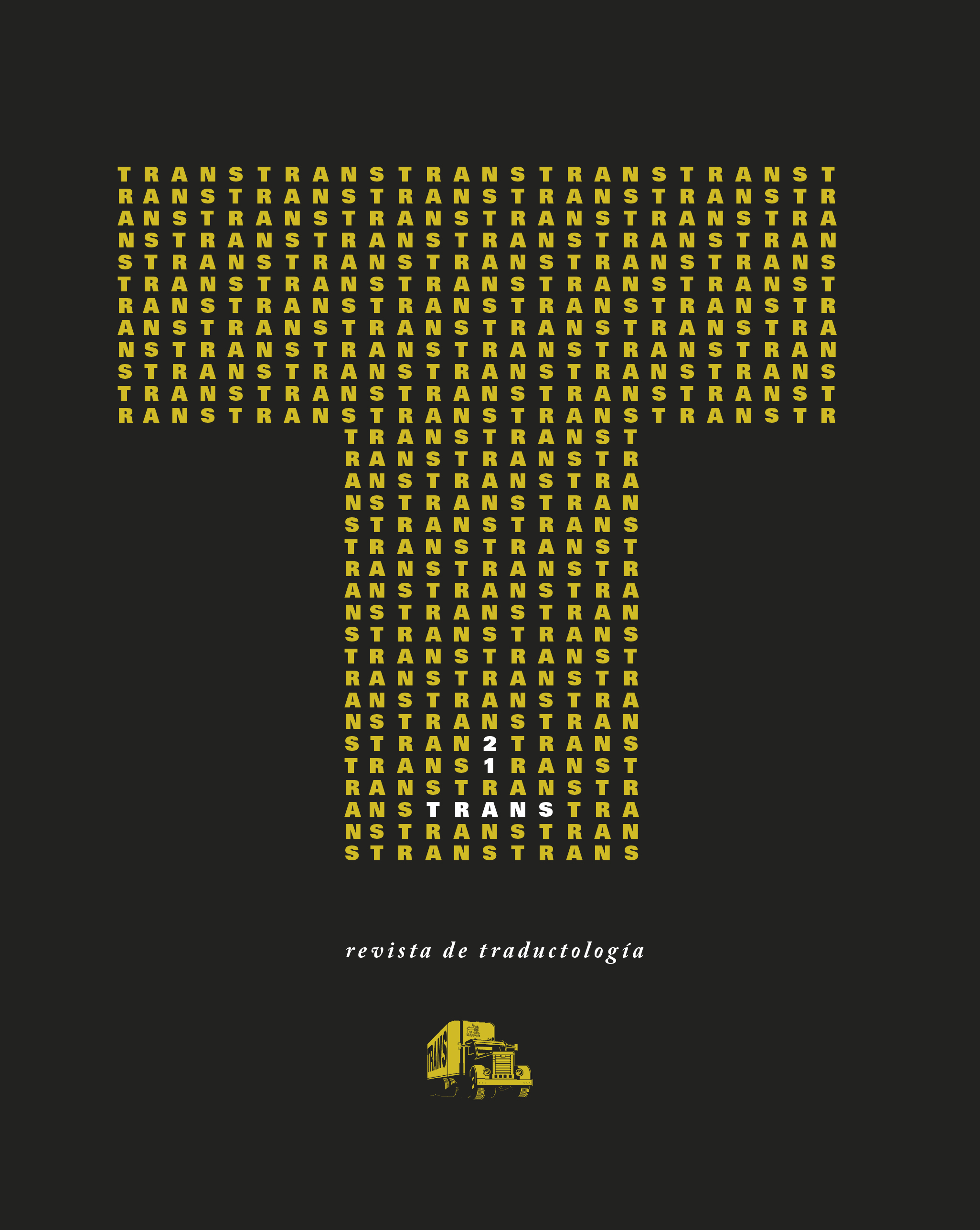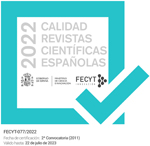Don Quixote in Manga: Translation, Transformation and Adaptation in the Japanese Mass Culture
DOI:
https://doi.org/10.24310/TRANS.2017.v0i21.3631Keywords:
Don Quixote, Cervantes, Manga, Japan, Mass culture.Abstract
During the 19th Century and with the first translations of Don Quixote to japanese, Cervantes’ work started to be part of the country’s mass culture. As a manifestation of this phenomenon, the manga absorbed the image of the knight-errant. This comic genre adapted it to its aesthetic criteria and merged it with its history and folklore. At the same time, the manga has been exported to Western world, where readers and artists are familiarized with its characteristical style. Hence, Don Quixote works together with the manga as a bidireccional bridge between Japan and Spain. Far from the novel, the universality of this classic will find its way into the drawing and will take as base the popular culture instead of the academic sphere.
Downloads
Metrics
Publication Facts
Reviewer profiles N/A
Author statements
Indexed in
-
—
- Academic society
- N/A
- Publisher
- Universidad de Málaga
References
Abril Sánchez, Jorge (2013): «Ah Gan’s Don Quixote (???????, 2010): Sun Tzu, Sun Bin, and the Warrior Spirit of the Chinese Knight of La Mancha» en Matthew D. Warshawsky y James A. Parr (eds.), Don Quixote: Interdisciplinary Connections, Newatk, Delaware: Juan de la Cuesta—Hispanic Monographs, 107-135.
Altares, Guillermo (2017) «Jiro Taniguchi, el dibujante que rompió las barreras del manga», Babelia, El País, 14 de febrero, <http://cultura.elpais.com/cultura/2017/02/13/actualidad/1486987984_954207.html>.
Aparicio Maydeu, Javier (2008): Lecturas de ficción contemporánea: de Kafka a Ishiguro, Madrid: Cátedra.
Bainbridge, Jason y Norris, Craig (2010): «Hybrid Manga: Implications for the Global Knowledge Economy» en Toni Johnson-Woods (ed.), Manga: An Anthology of Global and Cultural Perspectives, New York: Continuum, 235-252.
Bloom, Harold (1995 [1994]): The Western Canon. The Books and School of the Ages, London: Paperman.
Cercas, Javier (2011): «La tercera verdad», Babelia, El País, 25 de junio, <http://elpais.com/diario/2011/06/25/babelia/1308960747_850215.html>.
Cid Lucas, Fernando (2011): «Llegada y recepción del Quijote en la literatura y en la cultura popular japonesa» en Christoph Strosetzki (coord.), Visiones y revisiones cervantinas: actas selectas del VII Congreso Internacional de la Asociación de Cervantistas, Alcalá de Henares: Centro de Estudios Cervantinos, 215-226.
Don Quijote de la Mancha. El manga [Manga de dokuha, Don Quixote] (2016 [2009]): Marta E. Gallego Urbiola (trad.), Barcelona: Herder.
Fernández, Jaime (1985): «Cervantes en Japo?n», Anales Cervantinos, 23, 201-212.
Inamoto, Kenji (2000): «Don Quijote convertido en samurái: adaptación cultural en los primeros intentos de traducción al japonés del “Quijote”» en Antonio Bernat Vistarini y José María Casasayas (eds.), Desviaciones lúdicas en la crítica cervantina. Primer convivio internacional de «Locos Amenos»: Memorial Maurice Mohlo, Salamanca: UIB-USAL, 305-310.
Iwabuchi, Koichi (2012): Recentering Globalization: Popular Culture and Japanese Transnationalism, Durham: Duke University Press.
Kawata, Yushi y Yukito (2013-2014): Ureigao no kishi sono ai [El caballero de la cara triste y el amor], Japón: Shinchosha.
Lisón Tolosana, Carmelo (2005): La fascinación de la diferencia. La adaptación de los jesuitas al Japón de los samuráis, 1549-1592, Madrid: Akal.
Luque García, Ander (2013): «Manga de Dokuha: Japón al rescate de las letras universales», PliegoSuelto, 29 de mayo, http://www.pliegosuelto.com/?p=6537> [consulta: 10-V-2016].
Martínez de Lara, Ángel (2016): «Virtudes del Bushido en el Quijote» en Emilio José Delgado-Algarra (ed.), Occidente en Japón y Japón en Occidente: claves científicas, educativas y culturales para el intercambio entre Japón y Occidente, Huelva: Universidad de Huelva, 109-122.
Montero Plata, Laura (2011): «Animación japonesa bajo una mirada occidental», en Elena Barlés Báguena, y Vicente David Almazán Tomás (coords.), Japón y el mundo actual, Zaragoza: Prensas
Universitarias de Zaragoza, 1013-1034.
Montilla Martos, Ángel Luis (2016): «Caballeros y monjes ante la injusticia: Cervantes y Matsuo Basho», Anjhara Gómez Aragón (ed.), Japón y «Occidente»: El patrimonio cultural como punto de encuentro, Sevilla: Aconcagua Libros, 417-420.
EFE (2017): «Muere el japonés Jiro Taniguchi» (2017), abc, 11 de febrero, <http://www.abc.es/cultura/abci-muere-japones-jiro-taniguchi-poeta-manga-201702112013_noticia.html>.
Mutel, J (1972): Japón. El fin del shogunato y el Japón Meiji 1853/1912, trad. M. Batllori, Barcelona: Vicens-Vives.
Okubo, Michiko (2005): «Don Quijote, un héroe ideal para Japón», ADE teatro, 107, 152-157.
Pérez-Reverte, Arturo (2014): «Prólogo» a Miguel de Cervantes, RAE (ed.), Don Quijote de la Mancha [edición escolar adaptada], Madrid: RAE/Santillana.
Reggiani, Federico y Coronel, Sergio (2008-2009): Don Quijote, Buenos Aires: Moebius, v. 1 y 2.
Rodríguez Fernández, Iván (2016): «El anime como
valor cultural» en Anjhara Gómez Aragón (ed.), Japón y «Occidente»: El patrimonio cultural como punto de encuentro, Sevilla: Aconcagua Libros, 183-193.
Shiriagari, Kotobuki (2000-2001): “The Wandering Senior” Don Quixote [????”???????. Haikai Roujin Don Quixote], trad. Hox, Japón: Asahi Shimbunsha.
Tajada Sanz, Cristina (2011): «Intercambios culturales entre Japón y España a través del manga», en Barlés Báguena, y Vicente David Almazán (coords.), Japón y el mundo actual, Zaragoza: Prensas
Universitarias de Zaragoza, 1001-1012.
Downloads
Published
How to Cite
Issue
Section
License
All contents published in TRANS. Revista de Traductología are protected under the Creative Commons Attribution-NonCommercial-ShareAlike 4.0 International (CC BY-NC-SA 4.0) license. All about this license is available in the following link: <http://creativecommons.org/licenses/by-nc-sa/4.0>
Users can copy, use, redistribute, share and exhibit publicly as long as:
- The original source and authorship of the material are cited (Journal, Publisher and URL of the work).
- It is not used for comercial purposes.
- The existence of the license and its especifications are mentioned.
- ShareAlike — If you remix, transform, or build upon the material, you must distribute your contributions under the same license as the original.
There are two sets of authors’ rights: moral and property rights. Moral rights are perpetual prerogatives, unrenounceable, not-transferable, unalienable, imprescriptible and inembargable. According to authors’ rights legislation, TRANS. Revista de Traductología recognizes and respects authors moral rights, as well as the ownership of property rights, which will be transferred to University of Malaga in open access.
The property rights are referred to the benefits that are gained by the use or the dissemination of works. TRANS. Revista de Traductología is published in an open access form and it is exclusively licenced by any means for doing or authorising distribution, dissemination, reproduction, , adaptation, translation or arrangement of works.
Authors are responsable for obtaining the necessary permission to use copyrighted images.













21.png)
